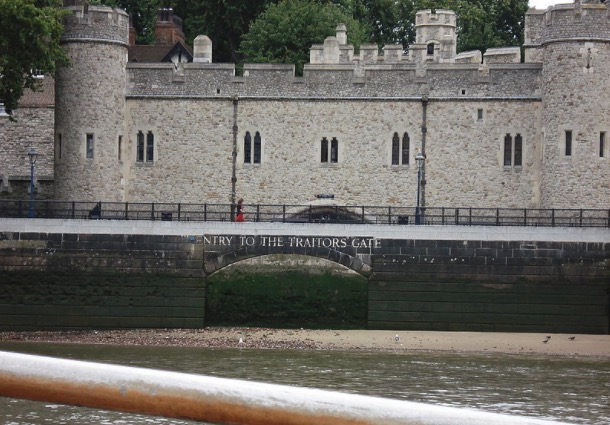The Traitor’s Gate is a notorious entrance to the Tower of London that was used to bring prisoners into the fortress. It is located on the north bank of the River Thames and was used as the main entrance to the Tower for prisoners who arrived by boat. The gate is infamous for its association with treason and betrayal, and its history is intertwined with some of the most significant events in English history.
History of the Traitor’s Gate
The Traitor’s Gate was built during the reign of King Edward I in the late 13th century. It was initially called the “Water Gate” and was used as a royal entrance to the Tower of London. However, it soon became associated with treachery and betrayal, and it was later renamed the “Traitor’s Gate.”
The gate was primarily used to bring prisoners into the Tower, many of whom were accused of treason or other serious crimes. The prisoners would be brought by boat up the River Thames, and they would enter the Tower through the Traitor’s Gate. The gate was also used to transport the bodies of executed prisoners out of the Tower and onto boats that would take them to their final resting places.


Famous prisoners at the Traitor’s Gate
The Traitor’s Gate has been used to bring many famous prisoners into the Tower of London over the years. One of the most famous prisoners was Sir Thomas More, who was accused of treason and executed in 1535. More was brought to the Tower by boat, and he passed through the Traitor’s Gate on his way to his cell. Another notable prisoner was Queen Anne Boleyn, who was accused of adultery and executed in 1536. Anne was also brought to the Tower by boat and passed through the Traitor’s Gate.
Other famous prisoners who passed through the Traitor’s Gate include Sir Walter Raleigh, Guy Fawkes, and the Earl of Essex. The gate has also been used to bring in prisoners during more recent conflicts, including both World War I and World War II.
The architecture of the Traitor’s Gate
The Traitor’s Gate is an impressive piece of medieval architecture. It is made from stone and features a wide arch that spans the River Thames. The gate is flanked by two towers, one on each side, and the tower on the left is known as St. Thomas’s Tower.
The gate itself is relatively plain, with only a few decorative features. However, it has a dark and foreboding presence that is heightened by its association with treachery and betrayal. The gate has been the subject of many poems and songs over the years, and it remains one of the most recognizable features of the Tower of London.
Visiting the Traitor’s Gate
The Traitor’s Gate is part of the Tower of London complex, and visitors can see it as part of a tour of the fortress. The gate is a popular attraction, and visitors can take photos and learn about its history. There are also guided tours available that focus specifically on the gate and its role in the Tower’s history.
Traitors Gate was originally known as Water Gate but was later changed when it was used as the landing for the Crown’s enemies. All important prisoners entered the Tower through this gate. According to legend when Princess Elizabeth arrived on Palm Sunday 1554 she refused at first to land at the gate, angrily proclaiming that she was no traitor.
The Wakefield Tower
Opposite Traitors Gate is the Wakefield Tower built in the early 13th century. Here the Crown Jewels were housed from 1870 until 1967. The tower has 2 chambers, the ground floor acting as a guardroom to the postern which led to the royal apartments above. These apartments were destroyed by Cromwell. The upper floor now contains a large and magnificent octagonal vaulted chamber in which there is an oratory.
Wakefield Tower was probably named after William de Wakefield, Kings Clerk, and holder of the custody of the Exchanges in 1334. In the 14th century, the State records were transferred to the Wakefield Tower from the White Tower, and in surveys of the period, the building is referred to as the Records Tower.
Henry VI died in the Wakefield Tower on May 21st, 1471. Henry VI, who was also the founder of Eton College, and of Kings College, Cambridge, is supposed to have been murdered on the orders of the Duke of Gloucester, later Richard III.
- Journey Through Time: Stonehenge and Windsor Castle Tour - September 11, 2023
- The UK Merlin Annual Pass: A Comprehensive Guide - August 7, 2023
- 10 Prominent People Buried at Westminster Abbey - August 7, 2023
